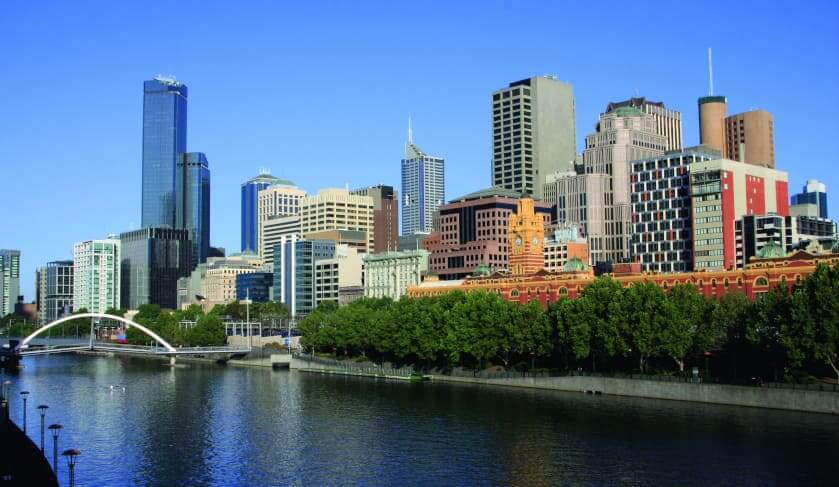Property market update: Melbourne, April 2018
Much like Sydney, Melbourne property markets are expected to experience months of mild decline and years of remaining flat. But should investors still consider putting their money in these baskets?

New house sales have declined in the capital city in the first quarter of 2018 largely due to housing affordability issues, slowing of foreign investment and tighter lending policies imposed by the Australian Prudential Regulation Authority (APRA).
National residential listings have also risen by 13.5 per cent and asking house prices are back at above $1 million, with a 1.7 per cent hike for houses and 0.3 per cent hike for units over the month.
However, although a near-term rebound is quite improbable, Melbourne’s strong economy will most likely prevent major price falls and generally keep the city’s property markets afloat.
While property values could fall, a drastic crash in the markets is nearly impossible.
For the most part, Melbourne property markets can recover in the next six or seven years.
Find out how you can take advantage of the remaining investment opportunities in the property markets of Melbourne:
House and apartment prices
Middle Melbourne, including the suburbs within 10 to 20 kilometers from the central business district, has recorded an all-time high median house price, which exceeded seven figures, according to the Real Estate Institute of Victoria (REIV).
Median house prices in Metropolitan Melbourne suburbs also rose by 4.4 per cent, while median apartment price reached $607,000.
The present market conditions, driven by continued population growth and consistently low interest rates, has created more opportunities for different types of buyers.
Among the top-performing suburbs in the capital city are Kew, with median price at $2.7 million; Brighton, with median price at $2.46 million and; Hawthorn, with a median price at $2.4 million.
The most affordable suburbs, on the other hand, are Melton West and Melton South, with median prices at $468,000 and $407,000, respectively.
Rents and vacancy rate
Most of the Australia’s capital cities held steady in terms of vacancy rate, including Melbourne, which recorded around 1.4 per cent of vacancy in its rental market.
Due to the tight rental conditions, asking rents for houses have risen by 1.1 per cent over the month and by 4.7 per cent over the past year, according to SQM Research.
Strong growth is expected to continue as population growth in Melbourne creates more rental demand.
On the other hand, rental yields in Melbourne is deemed to be underperforming at 2.93 per cent, which could mean that investors are utilising negative gearing and are starting to look into investing in other capital cities to avoid low yields.
However, on the brighter side, the rental yield for units have reached a record high with a 2.5 per cent increase over the quarter.
Vacancy tax
To lessen the vacancy in the capital city, the Victorian state government introduced the vacancy tax this year, which obliges investors to pay tax for any property that has not produced income for six months or more.
There are currently 20,000 properties across Melbourne that is believed to be left empty deliberately, and the government basically wants them back on the market, either to be sold or put up for rent—a move that aims to balance supply and demand.
According to Propertyology’s Simon Pressley: “Whether all these 20,000 properties come on the market to be sold or whether they come on the market to be rented out, either way, it's not going to have a good impact on prices or on rent.”
Strategy
For investors who want to enter the Melbourne market right now, you can opt to purchase units, which are far more affordable at $940,000 median price compared to houses at $4.6 million median price.
Units in Hawthorn can go as low as $611,000, while units in Caulfield North can be bought for $661,000.
Aside from low purchase prices, they also deliver strong capital gains, especially apartments in the inner- and middle-ring suburbs of Melbourne, including Thomastown, Reservoir and Thornbury.
Apartments and units are the best way to enter the Melbourne markets without having to compromise location and amenities. They basically allow you to enter a multimillion-dollar suburb for just a fraction of the price of houses in the same location.
By building equity in the property, investors can eventually move up the property ladder.
Buyers beware
Considering the fact that there are still positive movements in the market, Mr Pressley reminded investors that, at the end of the day, the best time to invest is before a growth cycle commences and not as it nears conclusion.
Whether you can afford it or not, he discourages buying from the market until it recovers.
For investors who already have assets in the capital city, he suggested holding on to them until the Melbourne market rises again.
He highlighted: “There will come a time in the future when they'll be back on our list but it's certainly not now. Our money is best spent elsewhere, to get a better bang for the buck in terms of investment results.”
